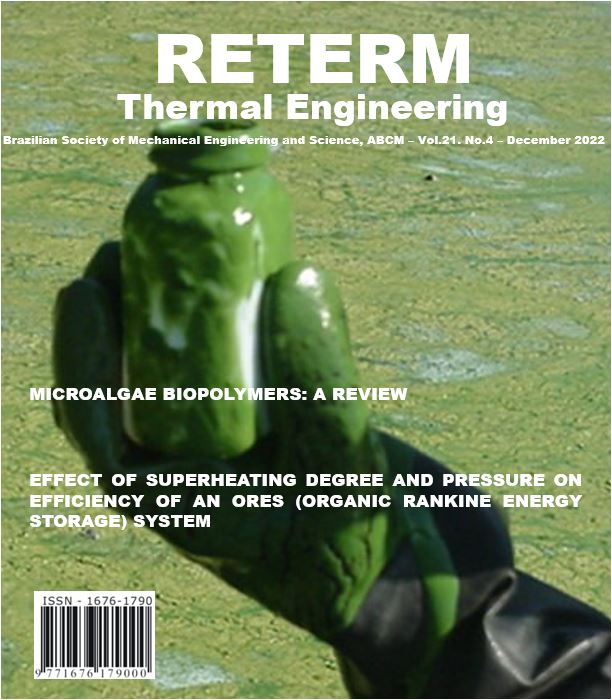| Vol.
21 - No. 4 December 2022 ISSN 1676-1790 |

FOR AUTHORS |
EDITORIAL |
STAFF |
| GET IN TOUCH |
| HOME |
You must have Adobe Acrobat Reader or Foxit Rader
for vizualization of the articles. Click here to download Adobe |
| Partners |

| Editorial |
|
The editorial of Thermal Engineering of this issue continues the discussion on scientific research needs in vital areas in which thermal engineering has important participation. The main goal is to motivate the readers, within their specialties, to identify possible subjects for their future research. The ever-growing global energy demand requires de development of alternative fuels. That demand has propelled the search for viable sources of clean energy. The investment in research and development in renewable energy has increased in recent years and the economic viability of those sources of energy has become closer to reality. One of the major downsides of the production of biofuels from vegetal sources is the use of land that would be used to produce food to produce agricultural products that will be used to produce fuel. Taking that context in consideration, the development of a methodology economically viable that produces biofuels and bioproducts from microalgae is a solution that meets the criteria. Energy applications is the biggest assets of microalgae growth; it can generate biohydrogen, biodiesel and biogas. Biodiesel is produced from microalgae oil; gas methane is produced by the anaerobic digestion (AD) of microalgae biomass and biohydrogen is produced by photolysis in the photochemical step of the photosynthesis. Hydrocarbons with similar composition of jet fuel can be obtained from microalgae by distillation. Other than that, microalgae can be used as supplies for pharmaceutical companies with high added value product as carotenoids, for example. Microalgae can be produced in photobioreactors (PBR’s). PBR’s are designed in a way that do not compete with the use of land for produce. The mission of Thermal Engineering is to document the scientific progress in areas related to thermal engineering (e.g., energy, oil and renewable fuels). We are confident that we will continue to receive articles’ submissions that contribute to the progress of science. Lauber Martins, Ph.D
|
Authors | Editorial | Get in Touch | Staff
Outras edições: Vol.1
- nº1 (before Nº1), Vol.1
- nº2 (before Nº2), Vol.1
- nº1 (before Nº3), Vol.1
- nº1 (before Nº4),
Vol.3
- nº1, Vol.3
- nº2, Vol.4
- nº1, Vol.4
- nº2, Vol.5
- nº1, Vol.5
- nº2, Vol.6
- nº1, Vol.6
- nº2, Vol.7
- nº1, Vol.7
- nº2,
Vol.8
- nº1, Vol.8
- nº2, Vol.9
- nº1-2, Vol.10
- nº1-2, Vol.11
- nº1-2, Vol.12
- nº1, Vol.12
- nº2, Vol.13
- nº1, Vol.13
- nº2,
Vol.14
- nº1, Vol.14
- nº2, Vol.15
- nº1, Vol.15
- nº2, Vol.16
- nº1, Vol.16
- nº2, Vol.17
- nº1, Vol.17
- nº2, Vol.18
- nº1,
Vol.18
- nº2, Vol.19
- nº1, Vol.19
- nº2, Vol.20
- nº1, Vol.20
- nº2, Vol.20
- nº3,Vol.20
- nº4., Vol.21
- nº1.,Vol.21
- nº2.,Vol.21
- nº3.
Copyright © 2003-2022
All rights reserved